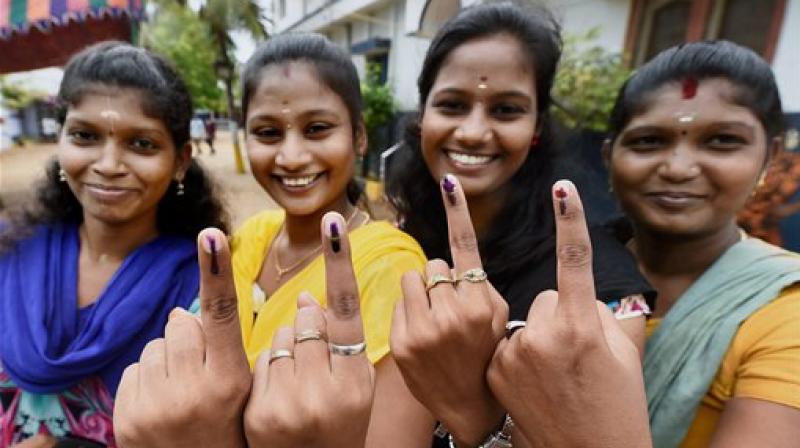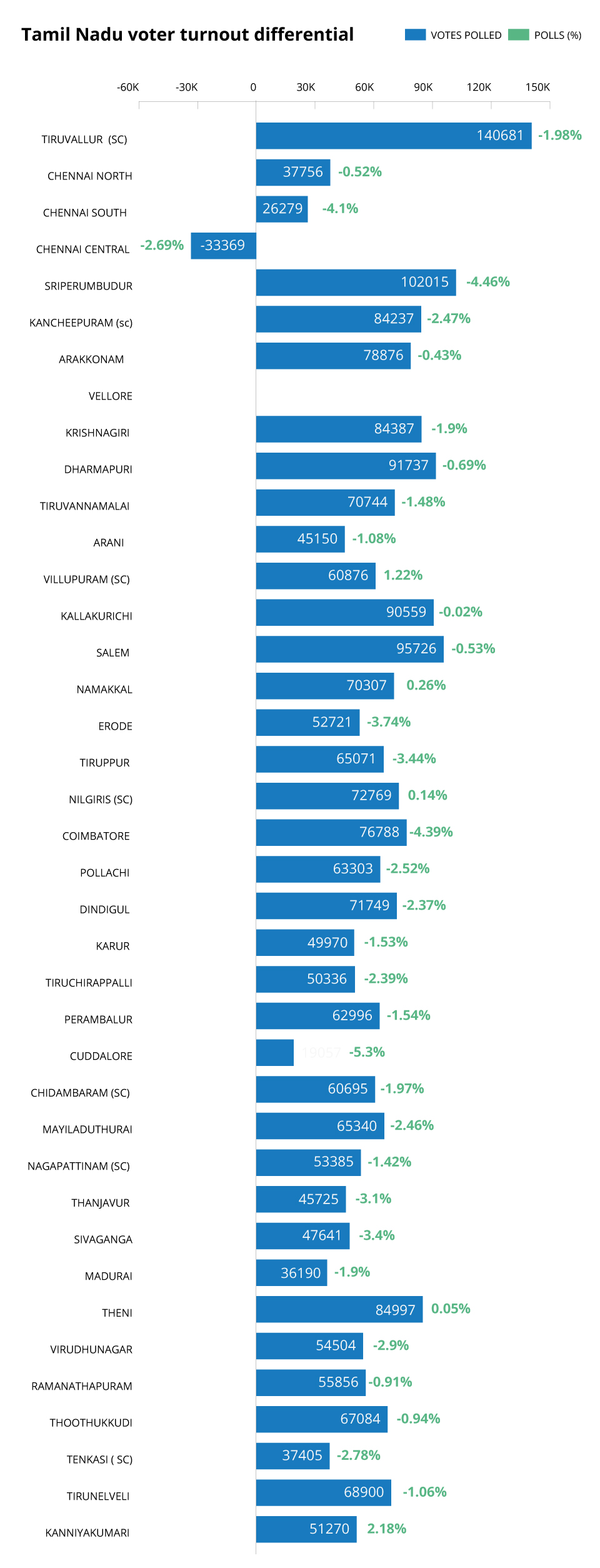
In 2019 polls, TN's first-time voters may have offset lower turnout by others

Contrary to media reports, it appears that more people cast their votes in the Tamil Nadu Lok Sabha elections on April 18 than in 2014. The media has merely gone by the comparison of percentages, noting the drop in poll percentage from 73.7 in 2014 to 71.90 now. This has been wrongly interpreted to show that there is a lower turnout this time. In reality, the size of the electorate increased from 551.14 lakh in 2014 to 598.69 lakh now. Therefore, even with a slightly lower percentage, the actual turnout has increased.07
In actual terms, the number of people who cast their votes in 2019 is over 430 lakh as against 406 lakh in 2014. This represents an increase of over 24 lakh this time.
The polling per cent of 71.90 now (out of the total electorate of 5,98,69,758) means over 430 lakh voters in April, including a projection of nearly 10 lakh votes in Vellore (to be held later). As many as 420.24 lakh voters had exercised their franchise in 38 constituencies in Tamil Nadu and the figure could cross 430 lakh once Vellore votes are in.
In 2014, the number of votes polled were 4,06,44,282 out of the total electorate of 551.14 lakh in the April 18 elections, it can safely be presumed that a majority of the new voters, especially first-time voters, would have cast their vote in 2019. There has been an increase of over 47 lakh new voters on the electoral rolls. Judging by the enthusiastic turnout of young voters at polling booths, and interviews given by several young voters to TV channels, it appears that they did not want to miss the opportunity of casting their votes. They were thrilled with the first-time experience. Therefore, it can safely be assumed that most of them would have voted.
The influx of new voters has actually spared the blushes for the Election Department as the numbers show that there must have been a drop of around 5 per cent in terms of 2014 voters. With the increase in new voters, the 2019 tally should have been in excess of 4.60 crore. That the final figure hovers around 430 lakh indicates that about 30 lakh of those who voted in 2014 had stayed away from the April 18 elections.
In only one Lok Sabha constituency – Chennai Central – both the poll percentage and votes cast were lower than in 2014. In 2014, 8,15,229 people had cast their vote in Chennai Central but this time only 7,81,860 turned up to vote. In all other constituencies, the votes polled on April 18 were higher than in 2014.
However, in all the other 37 constituencies that went to polls on April 18, the votes cast were more in number than in 2014. In Villupuram, Salem, Namakkal, Nilgiris, Theni, and Kanyakumari Lok Sabha constituencies alone, the poll percentage was higher in 2019 as compared to 2014.
A key factor in the reduction of about 24 lakh votes would be the absence of AIADMK leader J Jayalalithaa who helped the party fetch over 45 per cent of the votes without an alliance, largely on the perception that she could be the Prime Minister of the country. These votes could have been cast beyond party lines. Similarly, the 2014 election also saw the appeal of Narendra Modi as a harbinger of change. However, a section of voters seem to have been disillusioned with the turn of events since 2014, and could have avoided going to the polling booths. They might not have been interested in voting for some other party. Given these two factors, the AIADMK-BJP combine has reason to be worried about a possible loss of votes as compared to 2014.

Agents of change
The AIADMK must be hoping that a bulk of the new voters would have backed it in the April 2019 elections but interviews with the youth revealed that many of them wanted change. If that is so, then it is not good news for the two ruling parties either.
It could be a matter of comfort to the AIADMK that these disenchanted voters did not end up voting for the opposition. There is also a ray of hope for the AIADMK in the 18 by-elections to the State Assembly as the voting percentage in these constituencies is nearly four per cent higher than in the LS polls. It could mean that the anti-incumbency factor against the BJP appears to be much higher than the sentiment against the AIADMK. Wherever the AIADMK is in the field, there seems to have been a tougher fight with the DMK and its allies. On the other hand, the DMK camp predicts that the higher voting percentage in the Assembly by-elections indicates a strong anti-incumbency wave against the ruling AIADMK as well. The double anti-incumbency factor has helped create a wave in favour of the DMK-led front, they argue. The AMMK camp of TTV Dhinakaran has a different take. It believes that its strategy of concentrating on the by-elections has paid off, and that there has been massive mobilization in favour of the party in the last two to three months.
There is little doubt about the extra mobilization put in by the three parties, the AIADMK-led front, the DMK-led combine, and the AMMK in the Assembly by-elections. The question is whether the higher turnout was due to an anti-incumbency wave against the two ruling parties or was it a demonstration of money and muscle power in favour of the ruling parties as is customary in by-elections.


